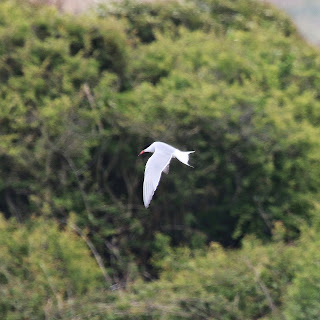 |
| Rodden Hive - winter |
 |
| Common Tern - Lodmoor |
 |
| Baby Coot - Lodmoor |
 |
| Great Crested Grebes - Lodmoor |
 |
| Female Red-footed Falcon - Wareham |
Flushed with success, I considered 'twitching' the Red-footed Falcon at Wareham. Thus, a cunning plan, enabling my younger son Max to visit a friend staying at Swanage, and for me to see another bird I'd not seen before was hatched (please excuse the pun). The falcon proved remarkably easy to find aided by the newly installed 'Surfbirds' app and by the serried ranks of tripods stood on a bridge on the A251 just outside Wareham.
 |
| Female Red-footed Falcon |
 |
| Tree Pipit - Middlebere |
Thereafter we drove to Middlebere - which must be on of my favourite places in the world. We walked up onto the heath and meet a most beautiful pink breasted Linnet which flew off before I was able to photograph it, a family of Stonechats and an outstanding Tree Pipit. Never has there been a bird so modest in looks with such a fantastic display and song.
 |
| Tree Pipit 'parachuting' - Middlebere |
Eventually we arrived at the hide overlooking the harbour and from which I have seen many wonderful spectacles. Alas, this is a site for which tide conditions are critical and with a draining basin, we had to make do with a couple of Spoonbills, a spanking Carrion Crow, Shellducks and some, fast becoming ubiquitous, Little Egrets.
 |
| Spoonbills and Shellduck - Middlebere |
 |
| Carrion Crow - Middlebere |
 |
| Stonechat family - MIddlebere |
No comments:
Post a Comment